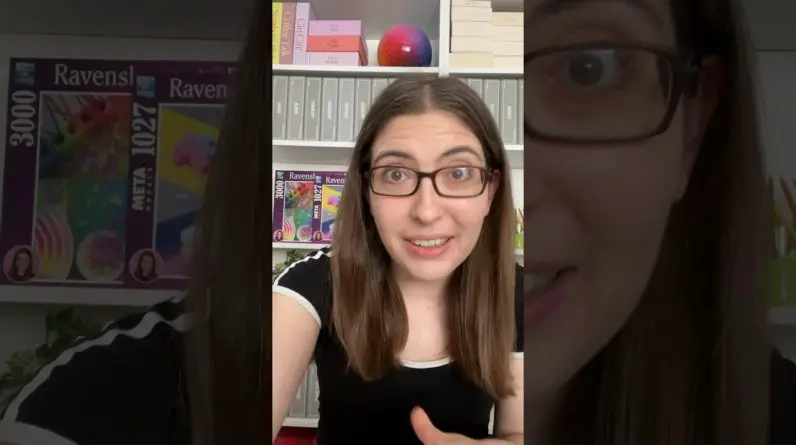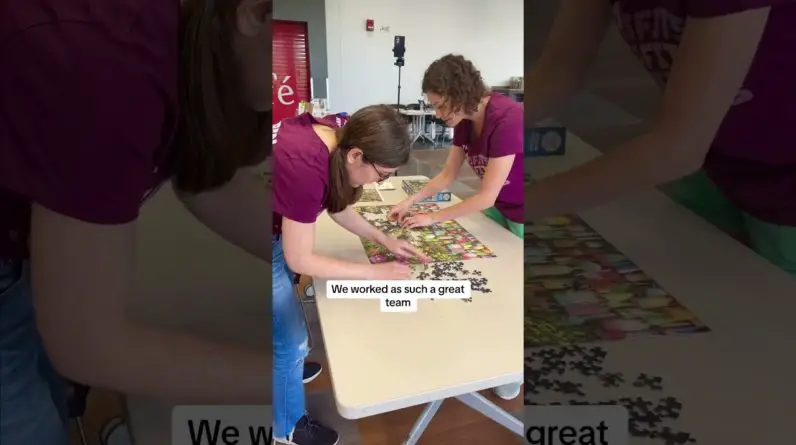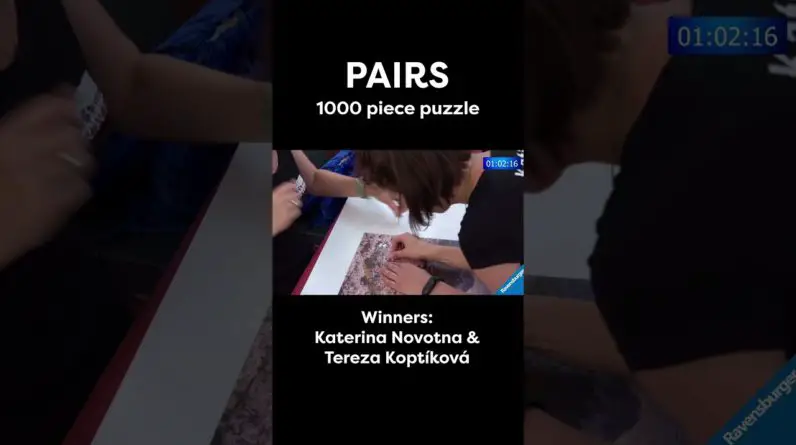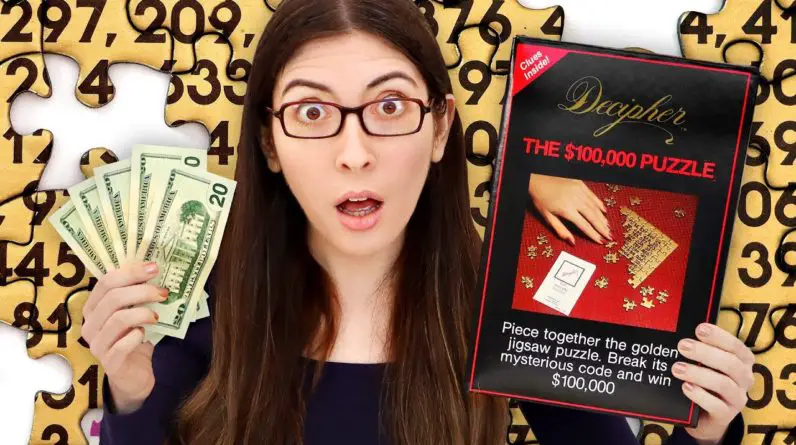
The $100000 Puzzle That Took Two Years to Solve
So recently, david dobrik has made headlines with his hundred thousand dollar jigsaw puzzle, which is a jigsaw puzzle that when you put it together, it becomes a qr code that you then scan and can win up to a hundred thousand dollars. I was actually um hired to put the puzzle together by a friend of his, and i wrote up all of my thoughts about it in an instagram post which i’ll link right down below. But it got me thinking. Is he the first person to make a jigsaw puzzle with a huge cash prize and it turns out not even close? I consulted the bible of jigsaw, puzzles this book by andy williams and i learned all about the decipher puzzle.
The original 100 000 puzzle, which came out in 1983 13 years before david dobrik, was even born. I went on to ebay, of course, and i found the puzzles brand new still sealed, and i thought it would be a really interesting to open them up, solve the puzzles and explain to you how it all worked. The prize is long gone i’ll, be telling you about who ended up winning it, but this is a story of cryptography, ciphers, mit grad students, computer algorithms, math equations. That look like this. Don’T worry, i don’t understand it either.
This hundred thousand dollar prize wasn’t a lottery. You had to be really smart and you really had to earn it so before i get into the history of the puzzle, why don’t we open these up and take a look at what’s inside all right, so i don’t actually know for sure which version of this Puzzle came out first, so, let’s just start with the big box. Oh, this is so exciting opening it up for the first time since it was made in the 80s all right there we go. You can see that here on the cover. It is the decipher puzzle.
The hundred thousand dollar puzzle there are clues inside. We have this nice little stock photo of this lady with a nicer manicure than me, and you can see that it is a gold puzzle with all of these numbers on it and then here’s the tagline piece together. The golden jigsaw puzzle break its mysterious code and win a hundred thousand dollars. So i’ll just show you all of the sides of the box. It’S pretty much just the same thing over and over, and then here on, the back.
They have some quotes from reviews of the puzzle as well as another little blurb about it, and then you can pause the video here. If you want to read this entire thing, it is just a brief, um history of the puzzle, along with a picture of warren holland, who is the guy who invented it all right? Oh my god, i’m so excited to open this up. Oh well, there’s really um not that much in here. This is a big box for not a lot of stuff, so you can see that we have a bag of pieces.
It’S only a 300 piece puzzle, so the bag isn’t that big! Okay, so here are all of the instructions and all of the rules. So after i solve the jigsaw puzzle, i’m gon na go through these rules in a little more detail right now, let’s just solve the jigsaw puzzle first, because this part of the puzzle is actually really complicated. Just wait! Oh wow!
I’Ve never seen. I don’t think i’ve ever seen a jigsaw puzzle printed on black cardboard like this. This is very classy, so here you can see all of the pieces uh since it is black cardboard. The puzzle dust is very apparent. You can see, there’s quite a lot of puzzle, dust accumulating, it looks kind of gross, but it’s it’s just cardboard.
Don’T worry, so the pieces actually feel really nice really high quality. The cardboard is really thick and, as i said, the black cardboard just makes it feel. Like luxurious, it looks like we have pretty much just the standard shapes for jigsaw, puzzles and all of the pieces are this like metallic shiny gold? It’S not glossy. It’S like the piece itself.
The printing is metallic, so as you’re going to come to find out, the jigsaw puzzle is by far the easiest part of this whole thing. So, let’s see how long it takes me to put together this 300 piece jigsaw, puzzle of a whole bunch of numbers, [, Music ]. So as this is a puzzle with only two colors and a very similar texture throughout. My first strategy was to organize the pieces by shape and since they’re all numbers, i could orient them the correct way from the beginning, which definitely made it easier to complete. This is one of those puzzles where it took a little while to get going, but the further along i went the faster and faster it came together.
My total time putting it together was an hour and 45 minutes. It definitely helped that the peace shapes were fairly unique and they fit together really well. There was none of having a piece accidentally in the wrong spot. It’S not that exciting of a design, so it wasn’t the most fun puzzle in the world, but it was a quick little one to do and i’m impressed by the quality of the pieces in what’s kind of a gimmick of a puzzle rather than one from an Established puzzle brand all right, so i finished putting together the puzzle. It was fairly difficult, but it’s only 300 pieces so not that bad.
So what we have is this gold jigsaw puzzle with all of these very mysterious numbers on there and i’m going to tell you exactly what these numbers mean, but first, let’s open up the smaller version of the puzzle. What i noticed on here is that this one is a 150 piece, two-sided puzzle, so i’m curious how it compares to this one. So again, you can see that the size of the boxes is very different. Oh look at that. It is sealed with a sticker, so fancy.
So here is the front of the box. You can see it has this shiny gold on it and much less information than the other one, there’s literally nothing on any of the sides and then again there’s just a blurb about it. On the back. Here we go. What is inside?
Oh, oh, do you look at that? Look how fancy so this time, instead of a plastic bag, the pieces come in this red velvet pouch and it looks like the instructions, and this registration card are exactly the same as the other one. Okay, the pieces look very similar, they’re gold, and you know it’s the same design, the gold design with the black letters. But here, if i zoom in on one of the pieces you can see, the front looks exactly the same. It’S made of the same black cardboard and then on the back.
It’S actually printed double-sided, but because of the bevel of how they cut the cardboard, you can very easily tell which side is the front and which side is the back, so i’ll, just nudge. This version of the puzzle out of the way – and let’s just quickly put this one together too, so at only 150 pieces – this one was definitely easier. I was able to do the edge quickly and then, since the design is offset a bit from the edge, i was able to put in a bunch of pieces with blank areas on them. Before i even moved on to the numbers. Where again, i had to separate them by shape, but you can see in this version i’m going much more in order just moving my way across the puzzle, rather than jumping all over the place like i did with the bigger version.
This one took me 25 minutes to do so, not a problem at all, so you can see that the puzzle holds together well enough that i can flip the entire thing over. So if we look at them side by side, you can see that the cipher actually starts on the back of the puzzle and on this version there aren’t any hints on the puzzle itself of where the cipher starts. So that’s so weird, that’s like an extra level of difficulty if you bought this version than if you bought the bigger one. Although, if you look on the front cover of the bigger one, i tried to recreate that photo and the corner that they’ve put together is actually from the smaller puzzle, but the corner, that’s on the back side of my puzzle, is on the front of their puzzle. So that’s just a little weird thing that i noticed, but i’m definitely getting a little ahead of myself now that we’ve done the jigsaw puzzles.
Let me tell you about why these puzzles exist and the answer to the mysterious cipher [ Music ], all right, so the jigsaw puzzles, are only half the story. Here i mean obviously no one’s gon na give you a hundred thousand dollars for solving a 300 piece jigsaw puzzle. I mean, if only we can all dream. So i did a bunch of research to learn everything i could about these puzzles and all of my sources will be linked down in the description. So this puzzle was the invention of warren holland jr.
He was inspired by ciphers by thomas jefferson, beal, which supposedly led to buried treasure in the blue ridge mountains. So when he was 29 years old in 1983, he had the idea to create his own cipher, put it on a jigsaw puzzle and then sell it, and the first person to figure it out would win a hundred thousand dollars just to put it in perspective. A hundred thousand dollars in 1983 is about a quarter million today and these puzzles sold for 12 in 1983, which is about 30 today, so the puzzle was released around the spring of 1983. He set a deadline of march 1st 1984, which would give people about a year to solve it. So at this point, holland is the only person in the world who knows the answer to the cipher, although he also put it in a safety deposit box just in case like something happened to him.
There was also a line in this article that i read that apparently that first year he underwent regular lie detector tests. I guess to make sure he didn’t like leak. The answer to someone i mean. Theoretically, i guess he could have told a friend the answer had the friend claim the prize, and then they split it between the two of them. But that’s not what happened.
He was legit okay, so the way it’s gon na work is that on march, 1st 1984 he’s going to review all of the answers that have been submitted and then everybody who gets it right that first year gets to split the 100 000 prize. So it’s not actually who solves it. First, it’s just anyone who solves it in the first year gets some of the money. He also had scotland yard review the cipher to make sure that it was solvable, and they said it was. Although holland um in one of the articles said that he really wasn’t sure if people would be able to solve it in a year, so in a book that i found online that references this puzzle, it says that in the first few months no one had solved It but he had sold 142 thousand dollars worth of these puzzles, and so at 12, each that is 11 800 people who are trying to solve this thing, also something interesting with the prize money um when he first set it up.
He had to get the prize money insured, because the prize money came from the money that he made um selling the puzzle, but if somebody won before he had sold enough to earn the hundred thousand dollars like the money would have to come from somewhere. So an insurance company like stepped in and handled it, but it turns out he sold plenty that wasn’t an issue. Okay, so one more note about how it works. Each puzzle comes with a registration card, which is, i guess, basically like a proof of purchase. You had to fill this out and send it in and note down what your number was, so that, when you sent in your answer, you could label it with your personal number and then they would be able to match that up to you know you sending in Your answer, but one thing that’s a little weird: they asked for your social security number now.
I know that things like that worked a little differently in the 80s, but looking at it today, that is like wild that they would ask for that. Anyway, the march 1st 1984 deadline came and went and nobody solved it, so he decided to extend the deadline for another year and there were a lot more people who had bought this by now. So, in an article from march 7th 1984, it says that 150 000 of these had been sold, which, if you multiply that by 12, each means that he’s made 1.8 million dollars on these. But out of 150 000 people who bought this, only 533 solutions were submitted.
In the first year, and obviously all of them were wrong, so spoilers uh, the cipher, was eventually solved and i’m going to walk you through it. I mean as best i can. So all of the information in this section comes from a paper that was written by robert baldwin and alan sherman. They were grad students at mit in 1984 and they used a computer algorithm to solve it. They wrote up a very detailed paper about how they did it, which i’ll link down below it’s interesting, but fair warning.
It is very, very dense. You know i see things like this and this and this and my eyes just kind of glaze over, so i’m going to give you like the cliff notes version. If you want to read the entire paper, i will link it right down below. Also shout out to my sister, who helped me fact check this section. She went to an engineering college and literally took a class in cryptography.
I went to art school. This is like way above my pay grade. Okay. So if we look at the puzzle, it contains 376 numbers and they range from 1 to 12 52
Now it’s explained in the directions: they tell you this up front. This is a multiple substitution cipher to explain that, let’s start with a simple substitution cipher, so imagine coded messages that you might have written in middle school, a equals one b equals two etc pretty easy to understand and decode, but for a multiple substitution, cipher you’re going To start with a key text, the example that’s used in the paper is four score and seven years so just start counting out the characters and assign each one.
Its sequential number now decide what your answer is going to be, which is called the plain text. Their example is send red, then use the numbers from the key text to turn the plain text into a set of numbers. You can see that s is represented by 13 in both examples, but here is where it gets tricky. So in the key text, the same letter might appear more than once, so you can see that s could be represented by 5, 13 or 22 and it’s just random, which number the code maker decides to use. So using the same plain text, you could generate different sets of numbers as your cipher, but no matter which cipher it is.
You can still decipher them back into the same plain text, because if you have the key text, each number only represents one letter, even though each letter could be represented by multiple numbers. Does that make sense? I hope that makes sense. So, to give you a longer example, let’s pretend that the key text was a paragraph from the puzzle book here is how you could number the characters skipping any punctuation or numbers. Then you would use those numbers to decode the numbers on the puzzle and then the plain text that you get is the answer that you send in to win a hundred thousand dollars.
So obviously the key text is not provided to you, because then it would be too easy. The instructions did come with eight hints, which i’m gon na put on the screen. You can see that one of them is that the key text is available to the public and there is easy access to it. But the instructions don’t say how to deal with footnotes, captions special characters. They also hint that the key extraction strategy or how to assign numbers to the key text might have a bit of a twist to it, like maybe eliminating every other word, or only counting the capital.
Letters just to make this whole situation even more tricky. Any possibility like that is definitely on the table, so you can see why nobody solved this for over a year, there are thousands millions of easily accessible texts that could potentially be the key text and no human could check all of them against this set of numbers To see if the plain text that emerged was english and not just gibberish enter mit grad students and their computer algorithms, now remember this is 1984, so computers aren’t even close to what we have today and i’m not going to pretend to understand all of the algorithms Um, you can read the paper if you want all of the details on that part of it, but basically what they did was they found a way to feed a computer, a key text and the computer would translate it into numbers by applying all sorts of different Rules, like you know, numbering every single letter numbering every other letter, only the capital, letters and then for each of those. The computer would translate it into plain text using the sequence of numbers from the puzzle, and then they had another algorithm to recognize. If the output was actual english words so that they weren’t sifting through you know thousands of pages of gibberish. Now there were a few interesting things that i learned while trying to understand all of their math.
One of the first things they did was try to figure out how many possible key texts there are based on how many books are in the library of congress. So, assuming that you can start from any point in any of those books and they estimated about 100 common extraction strategies, which is the thing of like skipping every other letter or just like how you assign the numbers. So they found that there are 10 to the 16th possible key texts for the cipher, so the next thing they did was looked at the distribution of the numbers. There are 329 different numbers in the cipher and 297 occur exactly once, which means that 32 numbers are repeated. So the only reason that a number would have to be repeated is if it occurs more times in the plain text than it does in the key text.
So that could inform the extraction strategy. For example, the letter e is relatively common in english, but relatively uncommon as the first letter of english words. So if the extraction involved taking the first letter from each word, that would be relevant. Somehow sorry that that part of the math – i really do not understand so what they found somehow using math, is that the cipher was likely made by either taking the first letter or the last letter of a sequence of words rather than numbering every single letter. In that sequence, however, spoilers it turns out, holland did unnecessarily repeat some numbers just to throw people off.
I guess so the assumption that numbers wouldn’t be repeated unless absolutely necessary turns out that assumption was wrong. So one of the problems with using a computer to solve a cipher like this is that if one character is off in the key text, the rest of the output will be completely off. You know it’s overly sensitive to errors that a human might pick up if you’re doing it by hand, so there was always the possibility that their algorithm had passed over the solution in error just because it was inputted into the computer wrong. They also tried kind of working backwards by looking for poems that were exactly 376 characters long or they tried feeding common words backwards through the cipher to see if that would generate any recognizable key texts plus, since everyone had easy access to the key text, they tried Using the instructions that came with the puzzle, which would have been really clever, but not the answer, okay, so in the timeline we’re now at the original deadline of march 1st 1984
As i said, they extended the deadline for a year, so here are the new rules. The new deadline is february, 28, 1985 and so just like before.
Anyone who submits the correct answer before the new deadline – uh splits the 100 000 prize, but if no one submits within that next year, then it becomes monthly and so every person who submits a correct answer the first month that a correct answer is submitted. They all split the prize, and then there is one final deadline of june 30th 1989. So if nobody solves it by then um they’re just going to reveal the answer and give all the money to charity. Also at this point, after the first year, they started raising the prize money by a thousand dollars a month and the account that it was in was generating interest. So the prize money just kept going up and up and up so now that we’ve passed a full year with no correct solutions.
Holland offered an additional clue. He said that the key text was a popular novel by one of the 21 authors listed here, plus he established a hotline which you could call starting in may of 1984, and two authors would be eliminated from the list every month. So you could call the hotline to find out which ones – and i realized that both versions of this puzzle that i bought must have been from the second year that the puzzle was going because the instructions literally include that list of authors and the paper from the Mit students was very clear that for the first year that clue was not out there. I actually found a listing on ebay of an earlier version of the puzzle with a copyright date of 1983. So you can see that the copy on the back of the box is a little different and i’m sure that in the instructions um that last page with the list of authors just wasn’t in there.
So let’s jump forward a year by january of 1985
Surprise, nobody had solved it, but the list of authors had been narrowed down to carl sagan and one other author, so based on the original clue of 3 19 and since c is the third letter of the alphabet. And s is the 19th letter of the alphabet. Our mit grad students were pretty sure that it was going to be carl sagan and then because of the letter c, a clue they were pretty sure it was going to be his book cosmos. Now cosmos is not a novel, it is non-fiction but later on. Holland said that he used the word novel to mean um, not a fiction book, but to mean something new and unusual which like, when you have so little else to go on.
I feel like that’s a little iffy but okay, let’s move on so on february. 28. 1985, which is the second year deadline, uh holland gave out his biggest clue. Yet he announced that the key text was a sequence of first letters from chapter six of the book cosmos which, like i think he just really wanted a winner after two years, because there are only so many combinations of letters and words once you’ve narrowed it down. To a specific chapter of a specific book, but there is a funny little easter egg.
If you look up the country of holland in the index of cosmos, it actually sends you to chapter six in the book and another note: this is similar to the veal cipher that holland was inspired by for that one. You also had to take the first letter of each word in the key text, although for that one, it was the declaration of independence, [, Music ], so our mit grad students entered the chapter into their algorithm, but they still had a few issues. For example, they included the letter c, which is an abbreviation for circa, but holland had skipped it when he, you know, did his translation there’s another abbreviation jpl, which they counted as three words, but again, holland had skipped it, and then you have to think about how To treat hyphenated words, captions footnotes, anything like that, but finally, on march 29th 1985, they solved the cipher. What you have to do is start in chapter six of cosmos at the phrase first ages of the world. You number the first letter of each word skipping any abbreviations, captions footnotes, anything like that and then the solution you get is part of a poet’s advice to students by e
E cummings now one quick note um from me when i was trying to find that passage so that i could you know, check the cipher and make sure that this is how it was solved turns out the quote, which is where the key text for the cipher Starts um, it’s not in this edition of the book, so you know how chapters and books will often start with like quotes from other people.
Chapter six is supposed to start with three quotes, but in this edition there’s only two and the one that they cut is where the cipher starts. So i found a probably illegal uh pdf of the entire book. I guess the version from the 80s online – i’m not gon na link it, but that’s how i was able to get the full text to actually translate the cipher. So if you want to look into this for yourself, uh don’t get this book. You know get the original one from the 80s okay, but back to the story.
We have our answer, so it is time for the mit grad students to claim their prize right right right. Not so much turns out and it is in the rules. I checked you have to submit your answer not by the final day of the month, but the final business day of the month. So after all of that they were literally one day too late to claim part of the prize. They even got in touch with news outlets to you know, write a story about all of this and when they did, it was april fool’s day.
So literally no one believed them. Basically, they had the worst timing possible, but 36 people did submit a correct answer. In march of 1985, including all of these people, if anyone knows any of them feel free to get in touch with me, because i would love to hear what other people’s experiences were with solving this cipher. So the 36 winners split the prize. They each got a check for 3, 251 and 71 cents, which is you know, pretty far off from a hundred thousand dollars, but it is about 8 500 in today’s money.
So it’s not nothing. Apparently they also got a t-shirt. I would love to get my hands on one of those t-shirts. What a great piece of puzzle history, so some of them did also use computers to help them find the solution, but nobody documented it in as much detail as these mit students. So that’s why i used their process to explain how to go about doing it.
Although i did find two articles about a man named richard zucker, who was a math professor and was one of the 36 people to submit a correct answer. He said that he spent about 300 hours working on it and he used his prize money to take his family to hawaii, to make up for spending three months straight like doing nothing but working on the cipher. In another article, they say that some people used overnight mail to make sure that their answers were submitted in time. One ohio man was caught in 10 inches of snow and decided to drive to virginia to make sure that he could submit his answer in time rather than relying on the mail. I cannot confirm whether he made it and if he was indeed one of the 36 winners, but all of the winners said that they couldn’t have done it without that huge final clue in the end, over a thousand solutions were submitted, obviously, most of them wrong and Over 250 000 calls were made into the hotline.
I actually tried calling the hotline. While i was writing this video and unfortunately the number has now been disconnected, but going back to the original clues. Holland said that they were intentionally written to be a little tricky, where your first interpretation might not be the correct one. They are very, very tricky, especially when you have so little else to go off of so i just think that this is such an interesting puzzle and it’s a real testament to how difficult it was that nobody solved it for two years and then after one. You know big clue out of the thousands and thousands of people who bought the puzzle.
Only 36 people found the correct solution in the mit paper. They point out that, by making the key text a relatively common text that you basically just had to guess it made it more fair to people who weren’t necessarily like math professors and computer scientists, because basically anyone had about the same chances of randomly stumbling across the Correct key text plus since the parameters for the key text were so broad when it first launched it ensured that tons of people had time to buy the puzzle before it was solved. In order to make sure that this would be a successful product worth manufacturing and selling, plus it meant that holland had full control over the difficulty of the puzzle based on the amount of and the specificity of the clues that he would release afterwards. And, of course, it was really clever to put it on a jigsaw puzzle because by solving the jigsaw puzzle, you feel like you’ve made some progress, even if the cipher is way way more difficult than the jigsaw puzzle is so. I feel like this basically came out at the perfect point in time and like the only point in time that it could have been successful because you did have computer algorithms to help solve it.
But the computing power wasn’t anywhere near what it is today, where i’m sure this would be solved in like no time plus back, then you might work on it with your friends, your family, your classmates, but communication was much more limited. You know these days. There would be reddit threads and chat rooms and forums and people all over the world all working together on it. So again, it would be solved much more quickly and since the answer to claim the prize is just a piece of text, you know maybe some of the 36 winners worked together and just submitted separately in order to claim more parts of the prize. But these days the answer would be leaked online immediately, so it would just be impossible to know like who actually solved it on their own versus just using someone else’s work.
Oh boy. That was a lot clearly. I had a lot to say about this original decipher puzzle, but wait there’s some more. So in 1985 he released the decipher 2 and then in 1987 he released the decipher 3
These are still sealed, i’m planning to open them up for a future video, and i know that these are different puzzles they’re, not just different versions of the same puzzle, because on the back of the boxes, they reference the winners from the first puzzle, but i haven’t Been able to find any information literally nothing about what the answers to these ciphers are or anything about the prize money, whether it was ever claimed or not, it’s so wild. I have finally found something that the internet just has no information on, so i’m putting out an open call to anyone who is watching.
If you were around back then – and you know anything about the answers to the ciphers on these two puzzles. Please send me an email, i feel like i’m not going to make the video until i can give you guys an answer because imagine if i just put together the jigsaw puzzle and then i was like well that’s as far as we can go, you know that Would be so unsatisfying, you know, ask your parents ask anyone, you know who was around in the late 80s and liked puzzles, and then you know, of course, if you remember doing the first decipher puzzle, i’d love to hear from anyone else who worked on it back. Then, and what your experience was with it, so, okay, final thoughts, i feel like there has to be some kind of middle ground between david dobrik’s hundred thousand dollar puzzle, which was a relatively hard jigsaw puzzle, although i did it in like six hours so definitely doable And then the prize is a no skill lottery between anyone who solved the jigsaw. Puzzle like there has to be a middle ground between that and this, which is an easy jigsaw puzzle and then a secondary puzzle. That is so hard that you know, a very, very tiny percentage of people were able to figure it out, and only after some huge clues from the creator.
I don’t know like there has to be some other way to do it, that balances skill and luck. A little bit more fairly, i don’t know what that way is if anyone figures it out, you’ll probably have a very successful product on your hand, but speaking of puzzles that are basically impossible to solve, but have huge prizes if you do solve them. I can already hear some of you type type typing, but karen have you heard of the eternity puzzle which had a million dollar prize? Oh, have i ever make sure that you stay tuned, because if you thought that the hundred thousand dollar puzzle was interesting, just wait until you hear about the million dollar puzzle, but that is a puzzle for another day. For now you need a code word.
If you watched all the way to the end of this video, it is going to be um cypher. Imagine if all of the code words for all of my videos turned out to be like a secret cipher this whole time, but they’re, not sorry, all right, happy puzzling, and i will see you all next time you
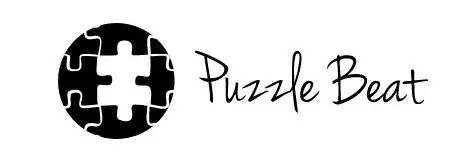
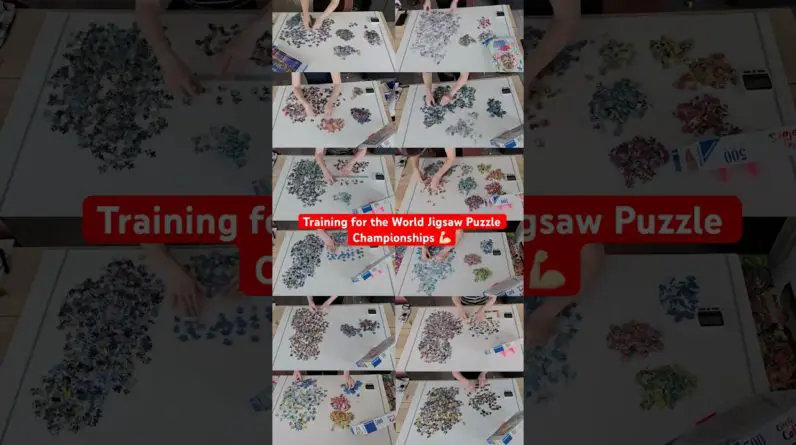
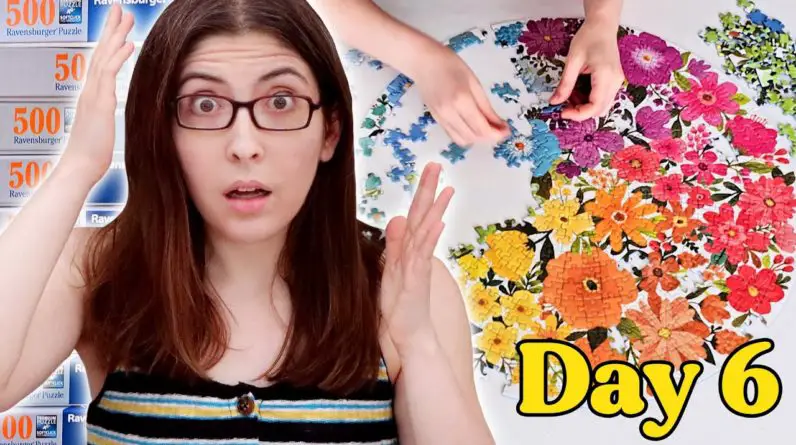
![[1563] Old School Parental Controls (Homework First NES Lock)](https://puzzlebeat.com/wp-content/uploads/2023/09/1563-old-school-parental-controls-homework-first-nes-lock-sseoSbBA-A8-796x445.jpg)
